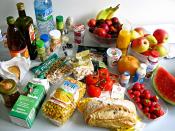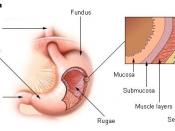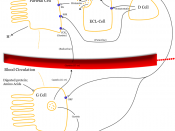Mouth
Food starts its long journey at the mouth. The mouth is the first part of the digestive system. The food is broken up with the help from saliva. Saliva contains an enzyme that breaks up the starch from food into smaller molecules. An adult produces about a litre of saliva each day.
Oesophagus
The oesophagus is the organ where bits of food swallowed are pushed down. It connects the throat above with the stomach below. At the intersection of the oesophagus and stomach, there is a ring-like controlling device that closes the passage between the two organs. However, as the food approaches the closed ring, the surrounding muscles relax and allow the food to pass. It takes about 10 seconds to gulp down.
Stomach
After going through the mouth and oesophagus, food enters the stomach, which has three mechanical tasks to do. First, the stomach must store the swallowed food and liquid.
This task requires the muscle of the upper part of the stomach to relax and take in large volumes of swallowed material. Secondly, the stomach has to mix up the food, liquid, and digestive juice produced by the stomach, and will generate a very thick liquid. By then, the lower part of the stomach mixes these materials by its muscle action. After mixing the materials in the stomach, it then has to slowly empty its content into the small intestines. The food in the stomach churns up an acid bath. This process may take up six hours just digesting in the stomach, depending on the size of the meal.
Small intestine
Our small intestine is a coiled tube almost 7 metres long. As food is digested into the small intestine, it dissolves into more juices produced by the pancreas, gall bladder, intestines and stomach, and...



Good
Good Essay!!
0 out of 0 people found this comment useful.